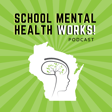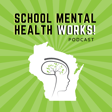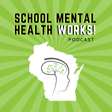
Episode 4: It’s Elementary! Constructing a Continuum of Mental Health Supports
The Wisconsin Department of Public Instruction defines the “Continuum of Mental Health Supports” as mental health promotion, early intervention, and treatment services, including crisis support. Often organized based on the level of need, the continuum creates a proactive, responsive and flexible web of support for all student’s mental, behavioral, social and emotional strengths and needs as they shift over time, with a focus on building resilience and protective factors rather than categorizing students based on their perceived deficits.
In the fourth episode of our podcast, Carey Jacobson, Director of Clinical Services at Wellpoint Care Network, and Katrina Johnson, Connect Strength Project Manager, discuss how their organizations partner with schools to create a continuum of support. Wellpoint offers Trauma Sensitive Schools training and consultation and also provides school-based mental health services. Katrina is a regional trainer for Sources of Strength, a school-based suicide prevention program with an emphasis on peer leadership and curriculums for elementary and secondary students.
Show Notes
Coalition for Expanding School-Based Mental Health in Wisconsin
Wisconsin Department of Public Instruction - Comprehensive School Mental Health
Wisconsin School Mental Health Framework
Wellpoint Care Network - School Based Mental Health
Trauma Sensitive Schools Training and Consulting
Youth Mental Health First Aid (WISH Center Training)


